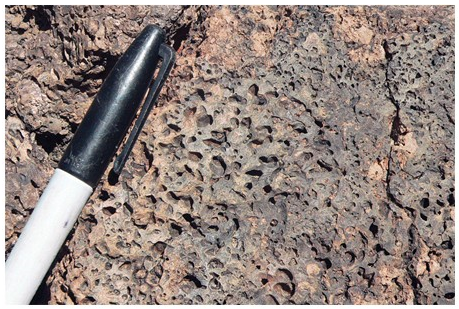The maximum amount of a pollutant that a body of water can support without reducing water quality below acceptable levels is represented by ________
A) total maximum daily loads
B) total minimum daily loads
C) total maximum daily levels
D) water quality
E) total minimum daily levels
Answer: A
You might also like to view...
What does this texture indicate about the formation of this rock?

A) It formed from an explosive pyroclastic eruption.
B) The rock solidified at great depth.
C) The magma formed some crystals before rising closer to the surface and solidifying.
D) The magma had abundant dissolved gas.
Which of the following is not an accurate statement about the melting process in the earth's interior?
A) Melting of rocks is incomplete with partial melts extracted as magma and solid residues left behind.
B) Upwelling flow in the earth's interior brings higher temperature rocks toward the surface and contributes to decompression melting.
C) The earth's lower mantle is entirely molten and heat from this zone produces partial melting in the upper mantle, which produces the diverse volcanic rocks we see at the earth's surface.
D) Water dramatically lowers the melting temperature of silicate rocks, and addition of water commonly contributes to production of magma.
The Chernobyl incident occurred
A) in the United States. B) in Cuba. C) in the Soviet Union. D) in India. E) in China.
Viral abundance decreases with depth and distance from shore.
Answer the following statement true (T) or false (F)